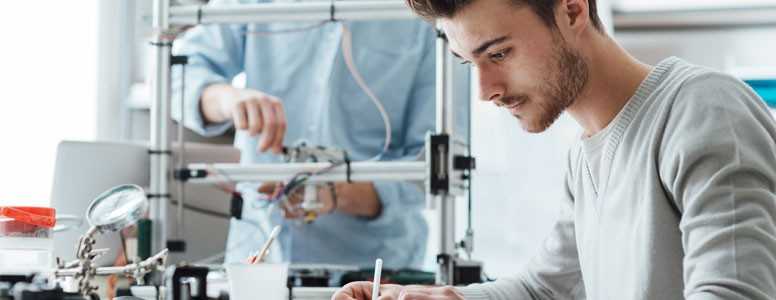Student researchers from Boston University have figured out a way to make a three-dimensional (3D) print of a functional pancreas with stem cells and other materials.
The idea originated from Thomas Hays, a senior BU biomedical engineering student who got involved in laboratory research looking at the use of 3D printing technology to create human organs.
He and two other biomedical engineering fellow students, called Kyle Reeser and Sebastian Freema, have put together a prototype for 3D printing an artificial pancreas (AP).
The 3D printed AP model consists in superposing layers of cells taken from a type 1 diabetes patient with hydrogel until a 3D tissue is created.
“It is essentially a layer-by-layer technique where we overlap different 2D layers of material (cells) until you have a 3D product,” Hays told the website Pipe Dream.
Once that process of creating a continuous piece of tissue is done, the early tissue construct is moved to cell culture tools where it grows and differentiates into its final form.
The concept of 3D bioprinting has been used in the past for printing artificial heart valves and tissues that have fewer blood vessels in them, such as skin and cartilage.
Printing an AP is slightly more complex as it’s a whole organ and requires careful consideration of the choice of materials, cell types, growth and differentiation factors.
There can be technical challenges with the architecture of the AP, with what relates to construction of tissues that will maintain blood flow, for example. Without a built-in vascular system, cell death would occur as the tissues expand in size.
As with any transplant, there is also the risk of organ rejection once inserted into a patient’s body. But, Hays, Reeser and Freeman found a workaround this issue: using harvested cells from a patient’s own body.
Timewise, printing small pieces of tissue to maturity can be quick. It is however unknown how long it would take to build larger, organ-sized tissues like the AP.
According to Hays, it could be another decade, if not longer, before the 3D printed AP project fully comes into focus, pass clinical and regulatory testing, and aid in regeneration.
What's new on the forum? ⭐️
Get our free newsletters
Stay up to date with the latest news, research and breakthroughs.


